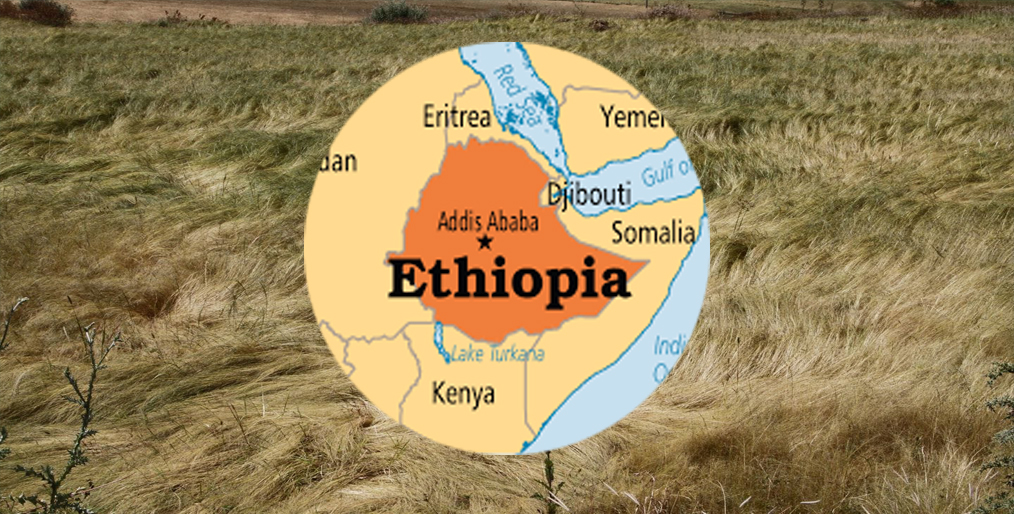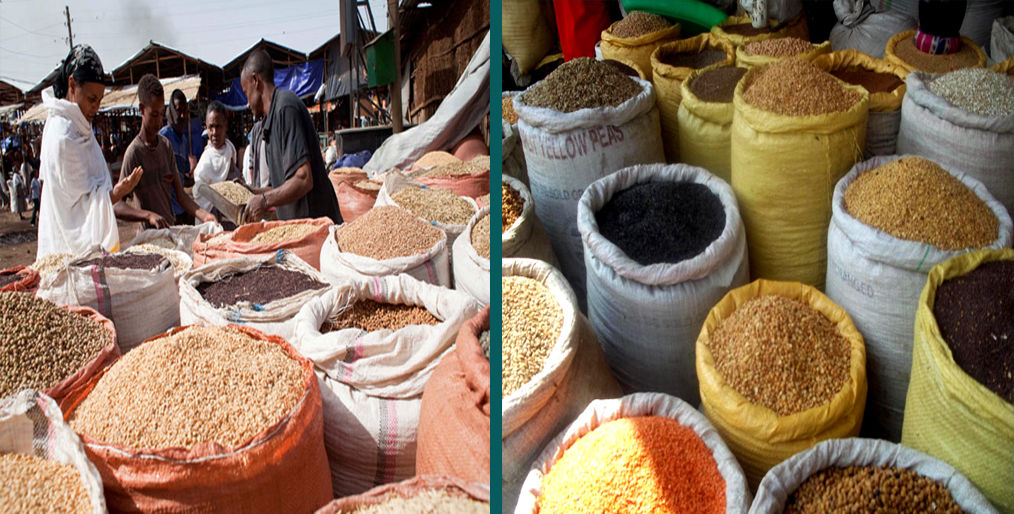
[caption id="attachment_2350" align="aligncenter" width="1014"] File Picture[/caption]
Ethiopia is dominated by the agriculture sector, which is responsible for more than 70% of the country’s employment. Grain production is focused on supplying domestic needs, but the country’s growing oilseeds sector is an important export earner.
The International Grains Council (IGC) puts Ethiopia’s total grains production at 21.1 million tons in 2019-20, a figure unchanged from its previous estimate as well as from the previous year’s level.
Wheat production in 2019-20 is put at 4.6 million tons, unchanged from the previous month’s forecast and up from 4.5 million in 2018-19.
Maize production in 2019-20 is put at 8.1 million tons, unrevised from the previous month and down from 8.3 million the year before.
Barley production is forecast at 2.3 million tons, unchanged from the previous month and up from 2.2 million the year before. Sorghum output is projected at 5 million tons in 2019-20, unrevised from the month before and the same level as in the previous year.
Ethiopia’s total imports of grains for 2019-20 are put at 1.2 million tons, a figure unchanged from the forecast made a month earlier and the same level as 2018-19.
The IGC forecasts imports of wheat in 2019-20 at 1.1 million tons, unrevised since the previous month’s report, compared with 1.2 million in 2018-19.
In an annual report on the grains sector dated March 29, the USDA attaché noted that forecast 2019-20 output would be a record and looked at the reasons.
“The government of Ethiopia (GOE) focused more on food security programs; there was favorable rainfall distribution during the short (belg) and the long rainy seasons (meher), better input supply, and availability of farm machines for rent for small scale farmers,” the report said.
The report explained that grains are an essential part of the diet of Ethiopians, providing an average of 50% of calorific intake.
Grain production
[caption id="attachment_2351" align="aligncenter" width="1014"]
File Picture[/caption]
Ethiopia is dominated by the agriculture sector, which is responsible for more than 70% of the country’s employment. Grain production is focused on supplying domestic needs, but the country’s growing oilseeds sector is an important export earner.
The International Grains Council (IGC) puts Ethiopia’s total grains production at 21.1 million tons in 2019-20, a figure unchanged from its previous estimate as well as from the previous year’s level.
Wheat production in 2019-20 is put at 4.6 million tons, unchanged from the previous month’s forecast and up from 4.5 million in 2018-19.
Maize production in 2019-20 is put at 8.1 million tons, unrevised from the previous month and down from 8.3 million the year before.
Barley production is forecast at 2.3 million tons, unchanged from the previous month and up from 2.2 million the year before. Sorghum output is projected at 5 million tons in 2019-20, unrevised from the month before and the same level as in the previous year.
Ethiopia’s total imports of grains for 2019-20 are put at 1.2 million tons, a figure unchanged from the forecast made a month earlier and the same level as 2018-19.
The IGC forecasts imports of wheat in 2019-20 at 1.1 million tons, unrevised since the previous month’s report, compared with 1.2 million in 2018-19.
In an annual report on the grains sector dated March 29, the USDA attaché noted that forecast 2019-20 output would be a record and looked at the reasons.
“The government of Ethiopia (GOE) focused more on food security programs; there was favorable rainfall distribution during the short (belg) and the long rainy seasons (meher), better input supply, and availability of farm machines for rent for small scale farmers,” the report said.
The report explained that grains are an essential part of the diet of Ethiopians, providing an average of 50% of calorific intake.
Grain production
[caption id="attachment_2351" align="aligncenter" width="1014"] File Picture[/caption]
According to the USDA attaché, there are some 9 million small land holders involved in the production of maize in Ethiopia. Larger commercial farms have been helped to achieve better yields by the increased availability of hybrid seed.
Although 90% of maize in the country is used as food, demand for maize for animal feed — especially for poultry — is increasing.
Sorghum is grown by around 4.8 million smallholder farmers, described by the attaché as “resource poor” and working “typically under adverse conditions in the eastern and northwest parts of the country where the weather is dry with poor fertility and high soil degradation.”
The crop accounts for about 10% of households’ calorific intake in eastern and northwest areas of Ethiopia.
Oilseeds production
[caption id="attachment_2352" align="aligncenter" width="1014"]
File Picture[/caption]
According to the USDA attaché, there are some 9 million small land holders involved in the production of maize in Ethiopia. Larger commercial farms have been helped to achieve better yields by the increased availability of hybrid seed.
Although 90% of maize in the country is used as food, demand for maize for animal feed — especially for poultry — is increasing.
Sorghum is grown by around 4.8 million smallholder farmers, described by the attaché as “resource poor” and working “typically under adverse conditions in the eastern and northwest parts of the country where the weather is dry with poor fertility and high soil degradation.”
The crop accounts for about 10% of households’ calorific intake in eastern and northwest areas of Ethiopia.
Oilseeds production
[caption id="attachment_2352" align="aligncenter" width="1014"] File Picture[/caption]
The attaché explained in a report dated June 14, 2018, that oilseeds play an important role in Ethiopia’s exports. The biggest export oilseed is sesame, followed by Niger seed and soybeans.
The attaché put 2018-19 soybean production at 120,000 tons, noting that output has risen from 35,000 tons in 2011-12.
“Most of this growth in production was due to an increase in the area planted, especially from commercial farms, which are few in number,” the report said. “About half of total soybean production is said to come from these bigger commercial operations, some of which are rotating or inter-planting soybeans with other crops. Improved yields also contributed to production increases.” Read more..
Source: Online/SZK
File Picture[/caption]
The attaché explained in a report dated June 14, 2018, that oilseeds play an important role in Ethiopia’s exports. The biggest export oilseed is sesame, followed by Niger seed and soybeans.
The attaché put 2018-19 soybean production at 120,000 tons, noting that output has risen from 35,000 tons in 2011-12.
“Most of this growth in production was due to an increase in the area planted, especially from commercial farms, which are few in number,” the report said. “About half of total soybean production is said to come from these bigger commercial operations, some of which are rotating or inter-planting soybeans with other crops. Improved yields also contributed to production increases.” Read more..
Source: Online/SZK
Comment Now